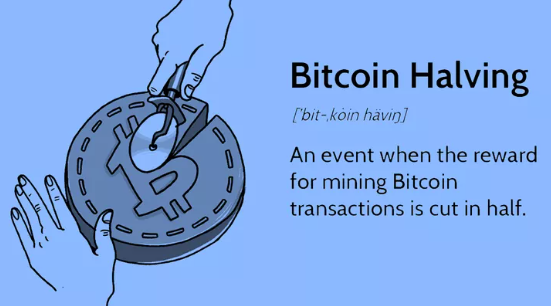What is Bitcoin Halving and Why Does It Matter?
Bitcoin Halving is one of the most anticipated events in the world of cryptocurrency, and it plays a crucial role in how Bitcoin operates. This guide will explain everything you need to know about Bitcoin Halving, how it works, its effects, and why it matters to the larger ecosystem.
Bitcoin, the world’s first decentralized digital currency, operates on a network that rewards miners for validating transactions. However, this reward undergoes a significant reduction roughly every four years, in an event called Bitcoin Halving.
Bitcoin Halving ensures that the total supply of Bitcoin remains limited, making it a scarce asset, similar to precious metals like gold. This mechanism is crucial because it impacts Bitcoin’s supply, demand, and ultimately, its price. For investors, traders, and miners, understanding Bitcoin Halving is vital for navigating the cryptocurrency landscape.
What is Bitcoin Halving and Why Does It Matter?
Bitcoin Halving refers to the event where the reward for mining new Bitcoin transactions is cut in half. When Bitcoin first launched, miners were rewarded 50 BTC for every block mined. After the first Halving in 2012, this reward was reduced to 25 BTC. The process repeats every 210,000 blocks, approximately every four years, until all 21 million Bitcoins are mined.
This event is crucial for multiple reasons:
- It reduces the rate at which new Bitcoins are created, increasing scarcity.
- It strengthens Bitcoin’s deflationary nature, which contrasts with fiat currencies that can be printed in unlimited amounts.
- It incentivizes long-term holding (HODLing) due to anticipated price increases following each Halving event.
Why It Matters:
Bitcoin Halving directly impacts the economics of Bitcoin. By cutting the mining rewards, it slows down the rate at which new Bitcoin enters the supply, leading to scarcity. Historically, this scarcity has driven significant price increases after each Halving event, affecting the entire cryptocurrency market.
How Does Bitcoin Halving Work?
Bitcoin operates on a decentralized, peer-to-peer network that records transactions on a public ledger called the blockchain. Miners use powerful computers to validate these transactions by solving complex mathematical puzzles, and in return, they receive Bitcoin as a reward.
The Halving event is coded into Bitcoin’s protocol and occurs automatically every 210,000 blocks, roughly every four years. When Halving happens:
- The mining reward is cut in half.
- The incentive for miners is reduced, but the scarcity of new Bitcoin entering the supply increases.
- The total supply is capped at 21 million Bitcoins, with the final Bitcoin expected to be mined around 2140.
Previous Halving Events:
- 2012: Block reward reduced from 50 BTC to 25 BTC.
- 2016: Block reward reduced from 25 BTC to 12.5 BTC.
- 2020: Block reward reduced from 12.5 BTC to 6.25 BTC.
With the next Halving event expected in 2024, rewards will drop to 3.125 BTC per block.
Features of Bitcoin Halving
Bitcoin Halving has several key features that make it a pivotal event for cryptocurrency enthusiasts and the broader market:
1. Scheduled Event
Bitcoin Halving is programmed to occur approximately every four years, making it a predictable event. This predictable supply schedule is part of what gives Bitcoin its appeal as a store of value.
2. Supply Cap
Bitcoin’s total supply is capped at 21 million coins, and Halving is an essential part of ensuring that this supply is not exhausted too quickly. The process will continue until all 21 million coins are mined, slowing down Bitcoin’s issuance rate as we approach that limit.
3. Mining Incentives
As Halving reduces mining rewards, it forces miners to adapt to lower revenue, leading to increased competition, efficiency, and eventually driving unprofitable miners out of the market.
4. Price Influence
Historically, Bitcoin’s price has seen significant upward momentum after each Halving event. As new supply decreases and demand either remains constant or increases, the price typically experiences substantial growth in the months following a Halving.
5. Network Security
With fewer rewards, one might expect mining activity to decrease, but the opposite happens. Miners stay incentivized as transaction fees become a larger part of their revenue over time. This ensures that Bitcoin’s network remains secure even after the rewards have diminished.
Pros of Bitcoin Halving
| Pros | Details |
|---|---|
| Increased Scarcity | By cutting block rewards, Bitcoin Halving limits the supply of new Bitcoin, increasing scarcity. |
| Price Appreciation | Historically, Halving has led to significant price increases due to reduced supply. |
| Network Security | Miners continue securing the network as transaction fees become more relevant after Halving. |
| Incentive for HODLing | Reduced supply encourages long-term investors to hold their Bitcoin, expecting future gains. |
| Decentralized Monetary Policy | Halving is part of Bitcoin’s decentralized governance, reducing reliance on centralized control. |
Cons of Bitcoin Halving
| Cons | Details |
|---|---|
| Reduced Miner Profitability | Lower block rewards mean that smaller miners may struggle to stay profitable. |
| Short-term Volatility | Halving events often lead to significant market volatility, which can be unsettling for investors. |
| Energy Consumption Concerns | Mining remains energy-intensive, and lower rewards may lead to a less energy-efficient network. |
| Increased Transaction Fees | As block rewards decrease, miners may rely more on transaction fees, increasing costs for users. |
| Speculative FOMO | Halving often leads to speculation and FOMO, which can create bubbles in the market. |
Bitcoin Halving Alternatives
While Bitcoin Halving is a unique feature of the Bitcoin network, some other cryptocurrencies have their own systems that manage supply in different ways.
| Cryptocurrency | Supply Control Mechanism | Comparison with Bitcoin |
|---|---|---|
| Ethereum | Transitioning to Proof of Stake (PoS) | Ethereum’s PoS model removes miners and reduces environmental impact, focusing on staking rewards. |
| Litecoin | Halving every 840,000 blocks | Similar to Bitcoin, Litecoin also undergoes Halving events, though at a slower rate. |
| Cardano | Deflationary issuance mechanism | Cardano uses a different deflationary model based on staking rather than Halving. |
| Ripple (XRP) | Pre-mined supply | Unlike Bitcoin, Ripple has a pre-mined supply, meaning no new coins are created after launch. |
Conclusion and Verdict: What is Bitcoin Halving and Why Does It Matter?
Bitcoin Halving is a fundamental part of Bitcoin’s architecture that controls its supply, ensuring that Bitcoin remains a scarce and valuable asset. By reducing the rate at which new coins are minted, Halving events have historically driven significant price appreciation, making them key moments for traders and investors alike.
Despite the short-term volatility and reduced rewards for miners, Bitcoin Halving strengthens the network’s long-term value proposition. As Bitcoin becomes scarcer, it continues to establish itself as a secure, decentralized store of value with a predictable monetary policy, unlike traditional fiat currencies.
FAQs: What is Bitcoin Halving and Why Does It Matter?
1. What is the exact date of the next Bitcoin Halving?
The next Bitcoin Halving is expected to occur in April 2024, though the exact date depends on block timings.
2. How does Bitcoin Halving affect mining profitability?
Bitcoin Halving reduces mining rewards, which can lower profitability for miners. However, increasing Bitcoin prices and transaction fees often help offset this reduction.
3. Can Bitcoin Halving stop inflation?
Bitcoin Halving is designed to reduce Bitcoin’s inflation rate over time by controlling the new supply, which contrasts with inflationary fiat currencies.
4. What happens when all 21 million Bitcoins are mined?
Once all 21 million Bitcoins are mined (estimated to occur in 2140), miners will rely entirely on transaction fees for revenue.
5. Will Bitcoin Halving affect other cryptocurrencies?
While Bitcoin Halving directly impacts Bitcoin, it often causes ripple effects across the broader cryptocurrency market, influencing prices and trading volumes of altcoins.
This comprehensive review outlines the concept, mechanics, and impact of Bitcoin Halving, emphasizing why it matters to the cryptocurrency ecosystem. By providing detailed insights and comparisons, this article serves as a useful guide for both beginners and seasoned investors.



